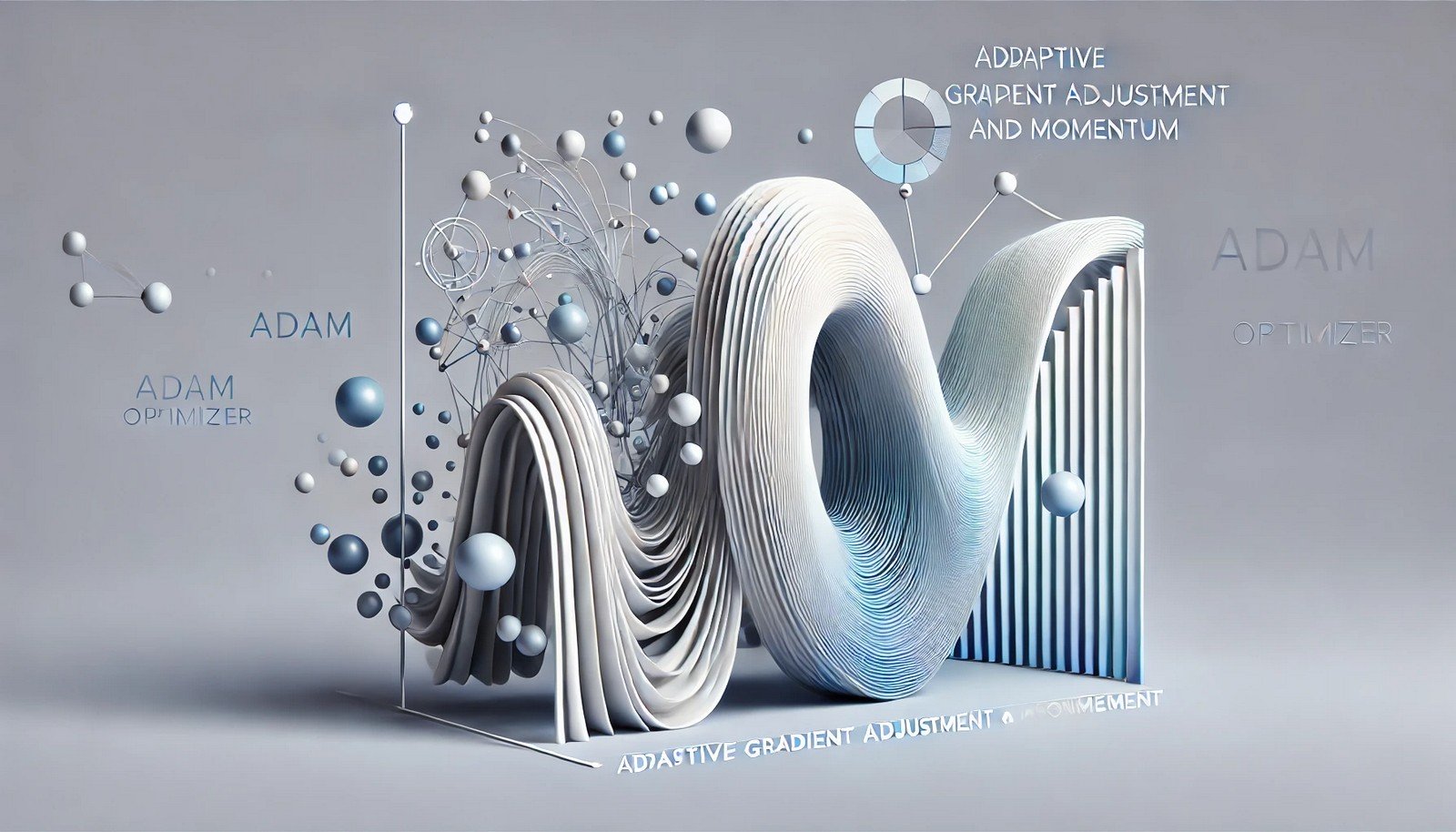Adam Optimizer

Quick Navigation:
- Adam Optimizer Definition
- Adam Optimizer Explained Easy
- Adam Optimizer Origin
- Adam Optimizer Etymology
- Adam Optimizer Usage Trends
- Adam Optimizer Usage
- Adam Optimizer Examples in Context
- Adam Optimizer FAQ
- Adam Optimizer Related Words
Adam Optimizer Definition
The Adam (Adaptive Moment Estimation) Optimizer is a popular optimization algorithm in machine learning, specifically designed for training deep neural networks. Adam combines the best properties of the AdaGrad and RMSProp algorithms, using adaptive learning rates to adjust weights based on past gradients. This makes it effective in optimizing both sparse and noisy data and fast in converging to minimal error values, often used for minimizing the loss function in models. Adam achieves this by maintaining two moment estimates: the first for the mean of gradients and the second for the variance, enabling it to adapt learning rates independently for each parameter.
Adam Optimizer Explained Easy
Imagine you’re trying to learn how to play a new video game. At first, you’re unsure what moves work best, so you try different things each time you play. Over time, you remember which moves helped you win and which didn’t. This optimizer works similarly, learning from previous mistakes to help the computer make better guesses next time.
Adam Optimizer Origin
Adam was introduced in 2015 by researchers Diederik P. Kingma and Jimmy Ba as an improvement over other optimization algorithms, addressing issues of computation time and adaptability for complex, deep learning models. Since then, it has become widely used across various neural network applications.
Adam Optimizer Etymology
The name “Adam” stands for "Adaptive Moment Estimation," capturing the algorithm’s ability to use past moments (gradients) to adjust future learning steps.
Adam Optimizer Usage Trends
The Adam Optimizer has grown in popularity due to the increase in deep learning applications and its effectiveness in training complex models quickly. Widely used in computer vision, natural language processing, and generative models, it remains favored for its balance between accuracy and efficiency in model training.
Adam Optimizer Usage
- Formal/Technical Tagging:
- Machine Learning
- Optimization Algorithm
- Gradient Descent - Typical Collocations:
- “using Adam Optimizer”
- “adaptive moment estimation”
- “learning rate in Adam”
- “Adam for neural networks”
Adam Optimizer Examples in Context
- The Adam Optimizer is commonly used in training convolutional neural networks for image classification.
- Natural language models like transformers often rely on the Adam Optimizer for faster convergence.
- In reinforcement learning, Adam is favored for its ability to handle noisy updates in sparse environments.
Adam Optimizer FAQ
- What is the Adam Optimizer?
The Adam Optimizer is a gradient descent optimization algorithm widely used in machine learning. - How does Adam differ from other optimizers?
Adam adapts learning rates individually for each parameter, improving convergence for complex models. - Why is Adam popular in deep learning?
It balances speed and accuracy, enabling efficient training of large neural networks. - What are the main features of Adam?
Adam uses adaptive learning rates and two moment estimates, optimizing performance on various data types. - What does “adaptive moment estimation” mean?
It refers to how Adam adjusts learning rates based on past gradient information (moments). - How does Adam handle sparse data?
By adjusting learning rates per parameter, it effectively deals with sparse and noisy data. - Is Adam suitable for reinforcement learning?
Yes, its adaptability makes it popular in environments with sparse rewards or noisy updates. - Does Adam have any limitations?
Adam may overfit in cases where the model is too complex or learning rates are too high. - How does Adam relate to AdaGrad and RMSProp?
It combines aspects of both, improving on AdaGrad’s scaling and RMSProp’s adaptive rates. - What kind of models use Adam most?
Adam is frequently used in neural networks, including transformers and convolutional networks.
Adam Optimizer Related Words
- Categories/Topics:
- Deep Learning
- Machine Learning
- Gradient Descent
Did you know?
Adam’s popularity surged following its release, transforming the efficiency of deep learning model training, particularly in complex architectures. Models using Adam often achieve faster convergence and require less fine-tuning than those using other optimizers.
PicDictionary.com is an online dictionary in pictures. If you have questions or suggestions, please reach out to us on WhatsApp or Twitter.Authors | Arjun Vishnu | @ArjunAndVishnu

I am Vishnu. I like AI, Linux, Single Board Computers, and Cloud Computing. I create the web & video content, and I also write for popular websites.
My younger brother, Arjun handles image & video editing. Together, we run a YouTube Channel that's focused on reviewing gadgets and explaining technology.



Comments powered by CComment